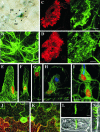The cytoskeleton as a regulator and target of biotic interactions in plants
- PMID: 15591444
- PMCID: PMC535820
- DOI: 10.1104/pp.104.052159
The cytoskeleton as a regulator and target of biotic interactions in plants
Figures



Similar articles
-
The plant cytoskeleton.Curr Opin Cell Biol. 1994 Feb;6(1):10-5. doi: 10.1016/0955-0674(94)90110-4. Curr Opin Cell Biol. 1994. PMID: 8167014 Review.
-
The Role of Viruses in the Phytobiome.Annu Rev Virol. 2018 Sep 29;5(1):93-111. doi: 10.1146/annurev-virology-092917-043421. Epub 2018 Jul 26. Annu Rev Virol. 2018. PMID: 30048220 Review.
-
The cytoskeleton becomes multidisciplinary.Plant Physiol. 2004 Dec;136(4):3853-4. doi: 10.1104/pp.104.900130. Plant Physiol. 2004. PMID: 15591442 Free PMC article. No abstract available.
-
Getting sick may help plants overcome abiotic stress.New Phytol. 2008;180(4):738-41. doi: 10.1111/j.1469-8137.2008.02673.x. New Phytol. 2008. PMID: 19138229 No abstract available.
-
Endocytosis, actin cytoskeleton, and signaling.Plant Physiol. 2004 Jul;135(3):1150-61. doi: 10.1104/pp.104.040683. Plant Physiol. 2004. PMID: 15266049 Free PMC article. Review. No abstract available.
Cited by
-
Arabidopsis actin-depolymerizing factor AtADF4 mediates defense signal transduction triggered by the Pseudomonas syringae effector AvrPphB.Plant Physiol. 2009 Jun;150(2):815-24. doi: 10.1104/pp.109.137604. Epub 2009 Apr 3. Plant Physiol. 2009. PMID: 19346440 Free PMC article.
-
Rearrangement of actin cytoskeleton mediates invasion of Lotus japonicus roots by Mesorhizobium loti.Plant Cell. 2009 Jan;21(1):267-84. doi: 10.1105/tpc.108.063693. Epub 2009 Jan 9. Plant Cell. 2009. PMID: 19136645 Free PMC article.
-
RNA-Sequencing in Resistant (QL3) and Susceptible (Theis) Sorghum Cultivars Inoculated With Johnsongrass Isolates of Colletotrichum sublineola.Front Genet. 2021 Aug 11;12:722519. doi: 10.3389/fgene.2021.722519. eCollection 2021. Front Genet. 2021. PMID: 34456979 Free PMC article.
-
The cytoskeleton is disrupted by the bacterial effector HrpZ, but not by the bacterial PAMP flg22, in tobacco BY-2 cells.J Exp Bot. 2013 Apr;64(7):1805-16. doi: 10.1093/jxb/ert042. Epub 2013 Feb 13. J Exp Bot. 2013. PMID: 23408828 Free PMC article.
-
Plant actin depolymerizing factor: actin microfilament disassembly and more.J Plant Res. 2017 Mar;130(2):227-238. doi: 10.1007/s10265-016-0899-8. Epub 2017 Jan 2. J Plant Res. 2017. PMID: 28044231 Free PMC article. Review.
References
-
- Abdrakhamanova A, Wang QY, Khokhlova L, Nick P (2003) Is microtubule disassembly a trigger for cold acclimation? Plant Cell Physiol 44: 676–686 - PubMed
-
- Aist JR (1976) Papillae and related wound plugs of plant cells. Annu Rev Phytopathol 14: 145–163
-
- Armstrong L, Peterson RL (2002) The interface between the arbuscular mycorrhizal fungus Glomus intraradices and root cells of Panax quinquefolius: a Paris-type mycorrhizal association. Mycologia 94: 587–595 - PubMed
-
- Berg RH (1999) Cytoplasmic bridge formation in the nodule apex of actinorhizal root nodules. Can J Bot 77: 1351–1357
Publication types
MeSH terms
LinkOut - more resources
Full Text Sources

